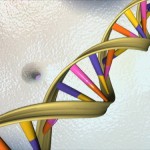
Facebook Twitter Pinterest Flickr Google+ YouTube Instagram
Written on: February 16th, 2010 in Blog Posts, Learning Journeys

Sometimes it strange how everybody’s learning/reading interests converge. At some point last week during Snowmageddon ’10, I looked around at my reading family and noticed that we were all reading books which were just about on the same topic. Normally our interests are much more obviously diverse- and even so, while the books we were reading all had evolution and natural history as a central theme, they were still very different!
My wife was reading Remarkable Creatures by Tracy Chevalier, which charts one woman’s struggle for scientific and social recognition in Victorian England, my daughter was devouring Evolution of Calpurnia Tate, the story of a girl’s discovery of science and the complexity of family life in 19th Century Texas, and I was reading Dry Storeroom Number 1, an eccentric history of London’s Natural History Museum.
For further reading, there are plenty of great books available through our libraries:
99% Ape: How Evolution Adds Up and Evolution: the First 4 Billion Years are both highly recommended by Choice Reviews (one of the most significant book selection resources for academic libraries), and would fulfill my non-fiction interests. Peter Dickinson’s Bone from a Dry Sea might be a good follow up read for Lucy, or to close the gap between fiction and non-fiction, she might be interested in Charles and Emma: the Darwin’s Leap of Faith, another 2010 award winner, which explores Darwin’s struggle to reconcile his faith with his discoveries. Our NoveList database suggests Diane Smith’s Pictures from an Expedition for Kirsten.
If we wanted to know more about the actual science behind the subject, we could always go to the MIT OpenCourseWare website and experience a free, virtual lecture series in biology and genetics: click here for the list of video lectures. You can view the first lecture in the MIT series below: